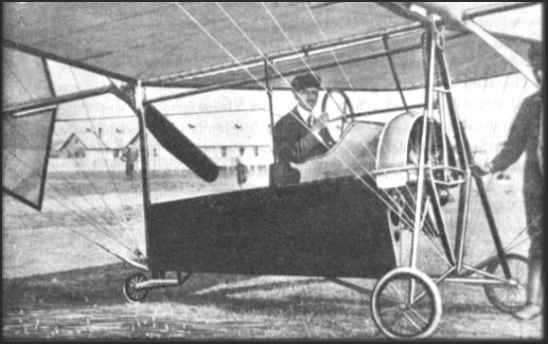
 |
|
piloted by Vlaicu himself (1912) Photo & text courtesy of Aurelian Simionescu, 11-4-04 |
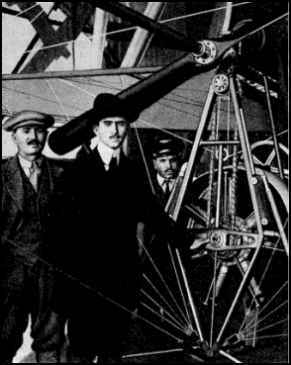 |
|
|
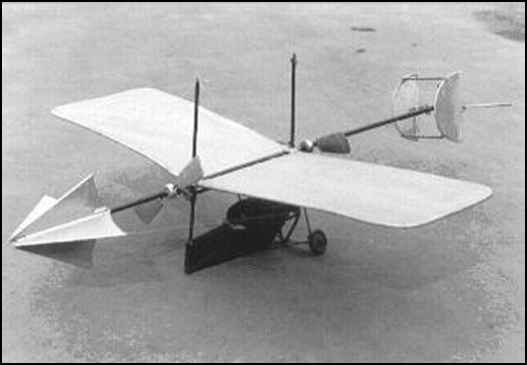 |
|
(Model, Technical Museum "Prof. Eng. Dimitrie Leonida ", Bucharest) Photo courtesy of Mihai Radu |
|
In the autumn of 1910, Aurel Vlaicu began designing a new airplane and built it at the "Arts and
Professions School" again with the help of Spiru Haret. Named "Vlaicu 2", this substantially improved plane flew at Liberty Field-Blaj,
during the 50th anniversary celebration of the establishment of the "Romanian Literature and Culture Association." He then went in aviation tours in Sibiu, Brasov, Iasi and other national towns, when "Vlaicu 2" set some special performances (flight at 1000m altitude, range speed 90 km/h, acrobatic trajectory).For all these, he received "Gheorghe Lazar" prize, given by Romania Academics at Spiru Haret proposal. In the summer of 1912, at international air show from Aspern-Viena, in some of most famous pilots company, he gained first place for hitting with a projectile a designated target from 300 m high and second place for accurate landing, after French pilot Roland Garros. |
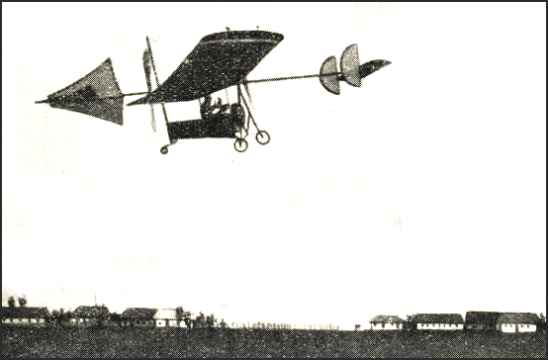 |
|
Photo courtesy of Aurelian Simionescu, 11-4-04 |
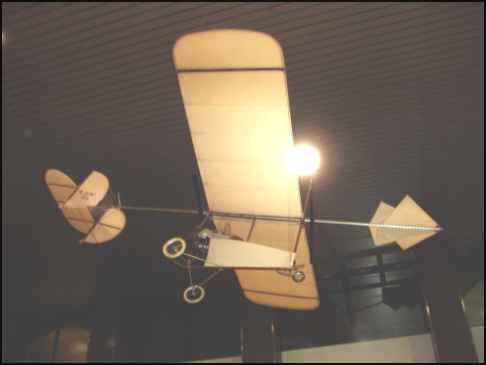 |
|
Replica of Vlaicu II airplane on display in "Henri Coanda" International Airport in Bucharest Photo & text courtesy of Aurelian Simionescu, 1-17-07 |
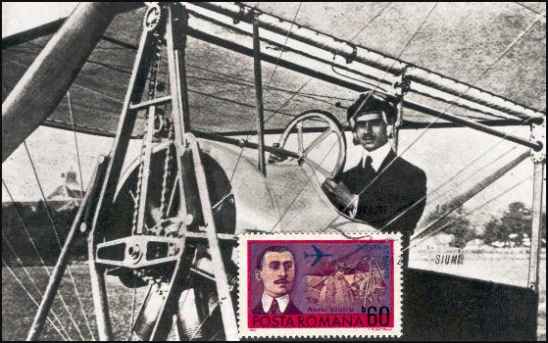 |
|
Postcard image courtesy of Giovanni Giorgetti, 2-18-07 |
|
Courtesy of Aurelian Simionescu, 7-27-09 1909 Gnome Omega Aircraft Engine Model 3 used a similar, but more powerful (80HP) engine. They were manufactured by Société des Moteurs Gnôme which changed name in 1914 to Gnôme et Rhône: Gnome et Rhône In terms of kg/HP, Gnôme engines were the most advanced of the time, because of their unique, simple design - see this animation: Gnome Rotary Engine If I remember correctly, after 1918, rotary engines were no longer manufactured because of the gyroscopic effect the engine + propellers induced, making the aircraft difficult to control - see this videoclip (I am not sure why they mention centrifugal force, which is not a factor) Warplane - Rotary Engine Centrifugal Force Vlaicu's design diminished this gyroscopic effect because the front propeller rotated in the opposite direction and the rear propellers in the same direction as the engine. Moreover, the two propellers, being coaxial, canceled each other's reaction torque (i.e. a twin rotor helicopter does not need a tail rotor, a design reapplied only years later by Macchi-Castoldi Wright brothers and Gustav Weisskopf aka Gustave Whitehead used 2 propellers rotating in the opposite direction, but theirs were not coaxial. It is probably unique for 1909-1910 when Vlaicu designed and built his Vlaicu 1 model, that it flew from the beginning, without any modification. This is because he perfected his design on scale models. See my letter to this ASME magazine: An Air Pioneer "Aurel Vlaicu (1882-1913) was a mechanical engineer and inventor educated in Budapest and Munich. From 1909 to 1913, he built three original, arrow-shaped airplanes, with flight control planes in front, two coaxial propellers, NACA-like ring around the engine, and independent suspension tricycle landing gear with brakes. In August 1912, Vlaicu won several prizes at the Aspern Air Meeting near Vienna. He died while attempting to cross the Carpathian mountains in flight on Sept. 13, 1913. What is remarkable about his engineering work is that he perfected the design of his flying machines on scale models. The successful demonstrations with two rubber band-powered models in front of a number of Romanian government officials brought him financial support to build his first real airplane in the fall of 1909 in Bucharest." Scroll to the bottom of the page |


|